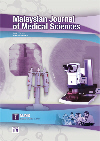
|
Malaysian Journal of Medical Sciences
School of Medical Sciences, Universiti Sains Malaysia
ISSN: 1394-195X
Vol. 26, No. 2, 2019, pp. 18-29
|
 Bioline Code: mj19018
Bioline Code: mj19018
Full paper language: English
Document type: Review Article
Document available free of charge
|
|
|
Malaysian Journal of Medical Sciences, Vol. 26, No. 2, 2019, pp. 18-29
| en |
The 2017 M Balasegaram Memorial Lecture: The Changing Landscape of Liver Diseases in Malaysia—60 Years On!
Goh, Khean-Lee
Abstract
The landscape of liver diseases in Malaysia has changed dramatically since the time of
Professor Balasegaram Manickavasagar—an eminent surgeon in the 1960s.
The most significant discoveries in hepatology have been that of hepatitis B virus in 1963
and hepatitis C virus in 1989, which have both been shown to be predominantly blood borne
diseases.
Hepatitis B and C infections result in long term carrier state and a high propensity to
develop liver cirrhosis and cancer. Hepatitis B is the most common cause of liver cirrhosis and
cancer in Malaysia. Blood bank screening and public health preventive measures have reduced
the disease burden significantly and an effective vaccination for hepatitis B is now incorporated
in our National Immunisation Programme. Although no vaccine is available for hepatitis C, highly
effective eradication therapies were introduced in 2011. These agents will significantly change the
disease scenario across the world.
A “new” disease was described in 1980, by Ludwig et al.—non-alcoholic fatty liver (NAFLD)
disease. With the global epidemic of obesity and diabetes mellitus, NAFLD is set to increase
exponentially across the world including in Malaysia. It will be the most important liver disease in
the future, replacing hepatitis B and C infections.
Keywords
liver abscess; hepatitis B; hepatitis C; hepatocellular carcinoma; non-alcoholic fatty liver disease; Malaysia
|
| |
© Copyright 2019 - Penerbit Universiti Sains Malaysia
Alternative site location: http://www.medic.usm.my/publication/mjms/
|
|
